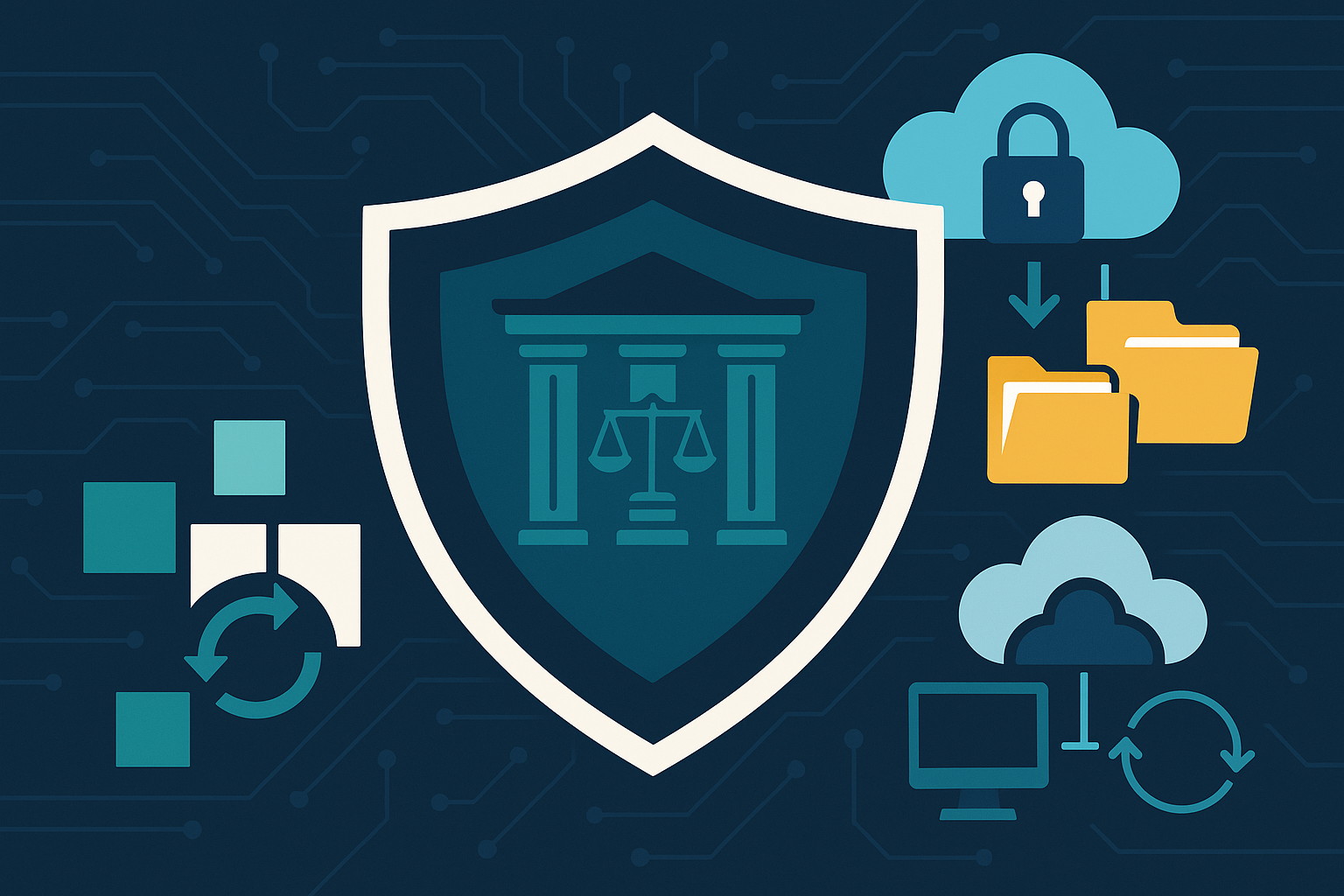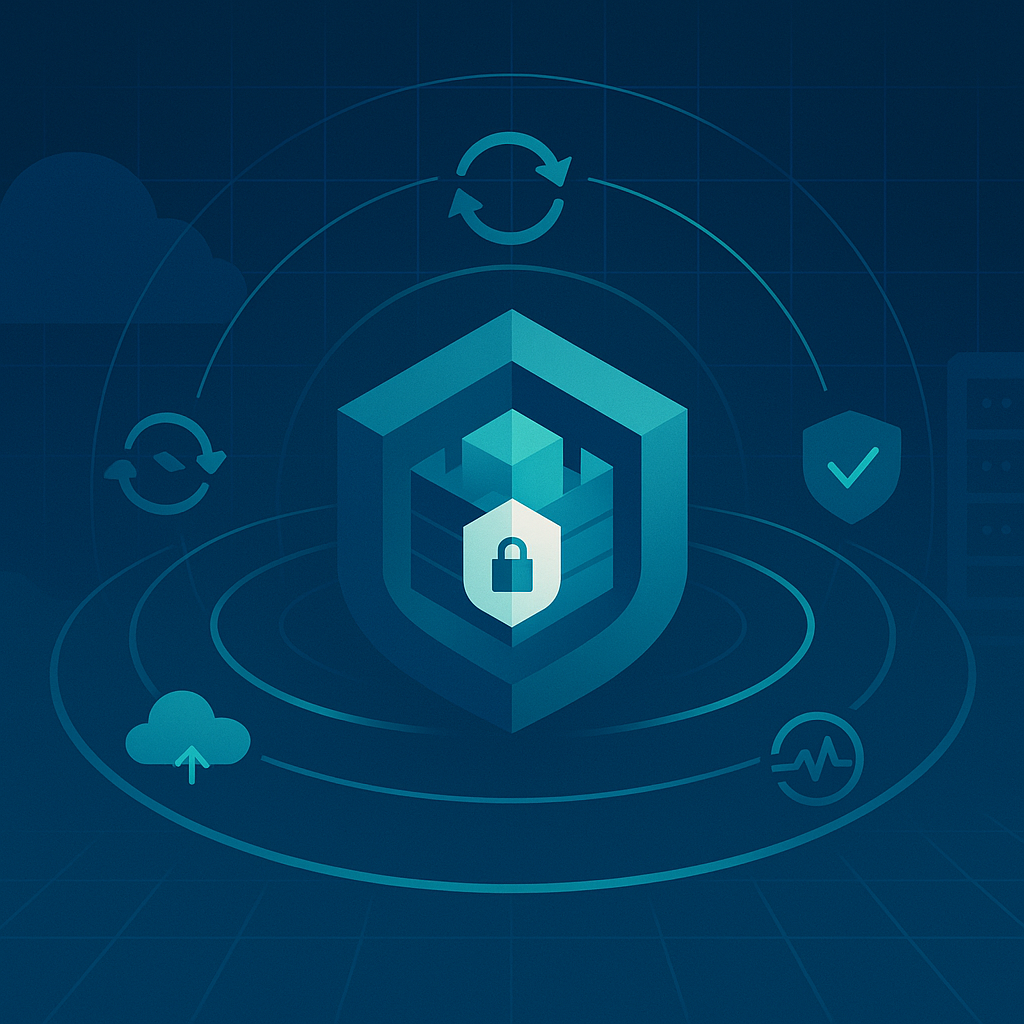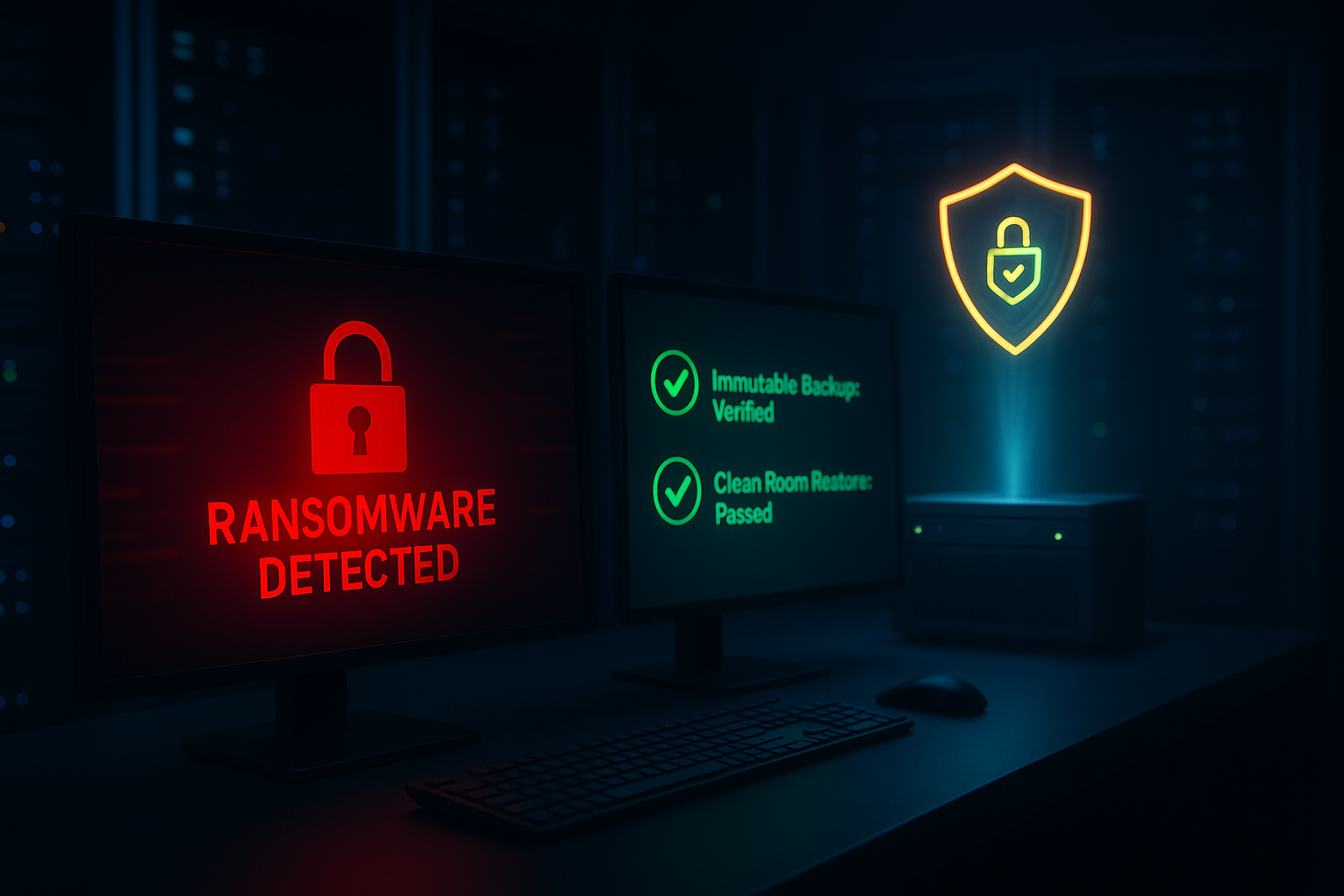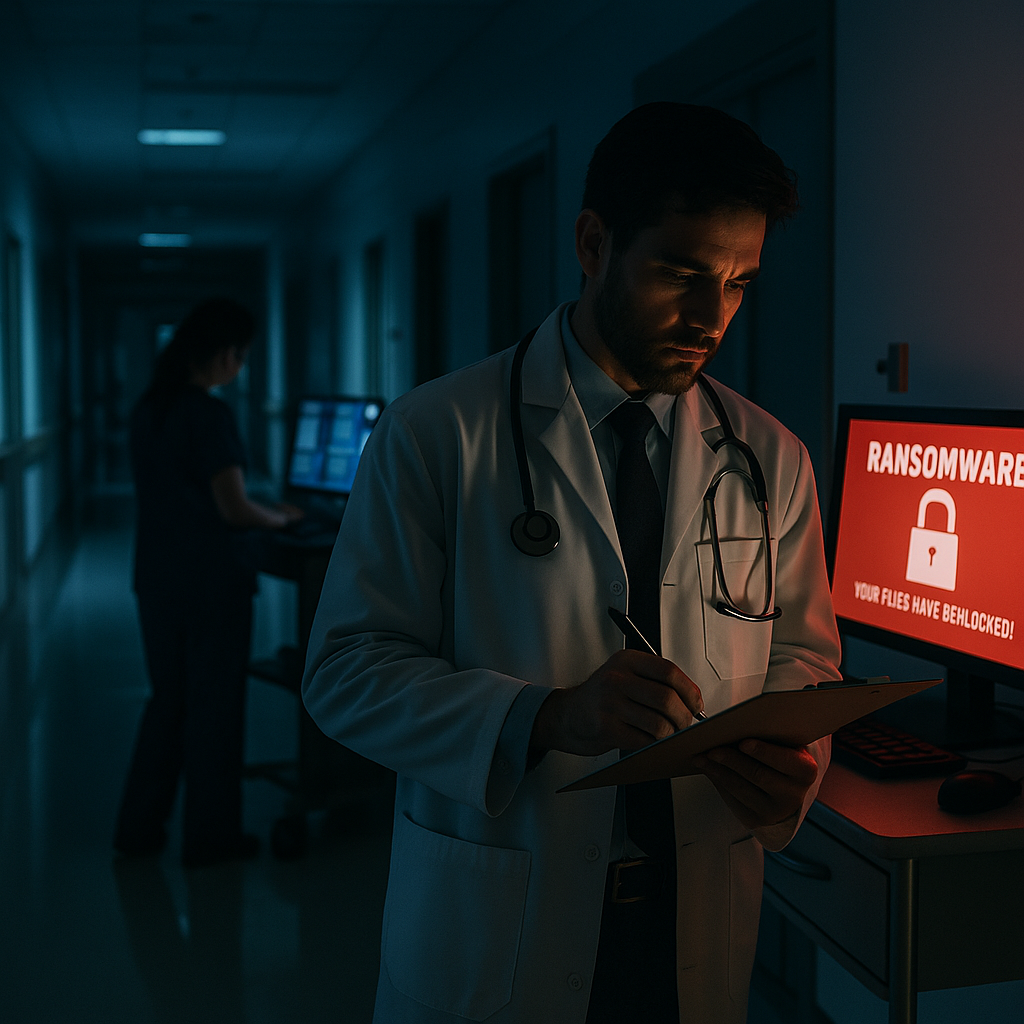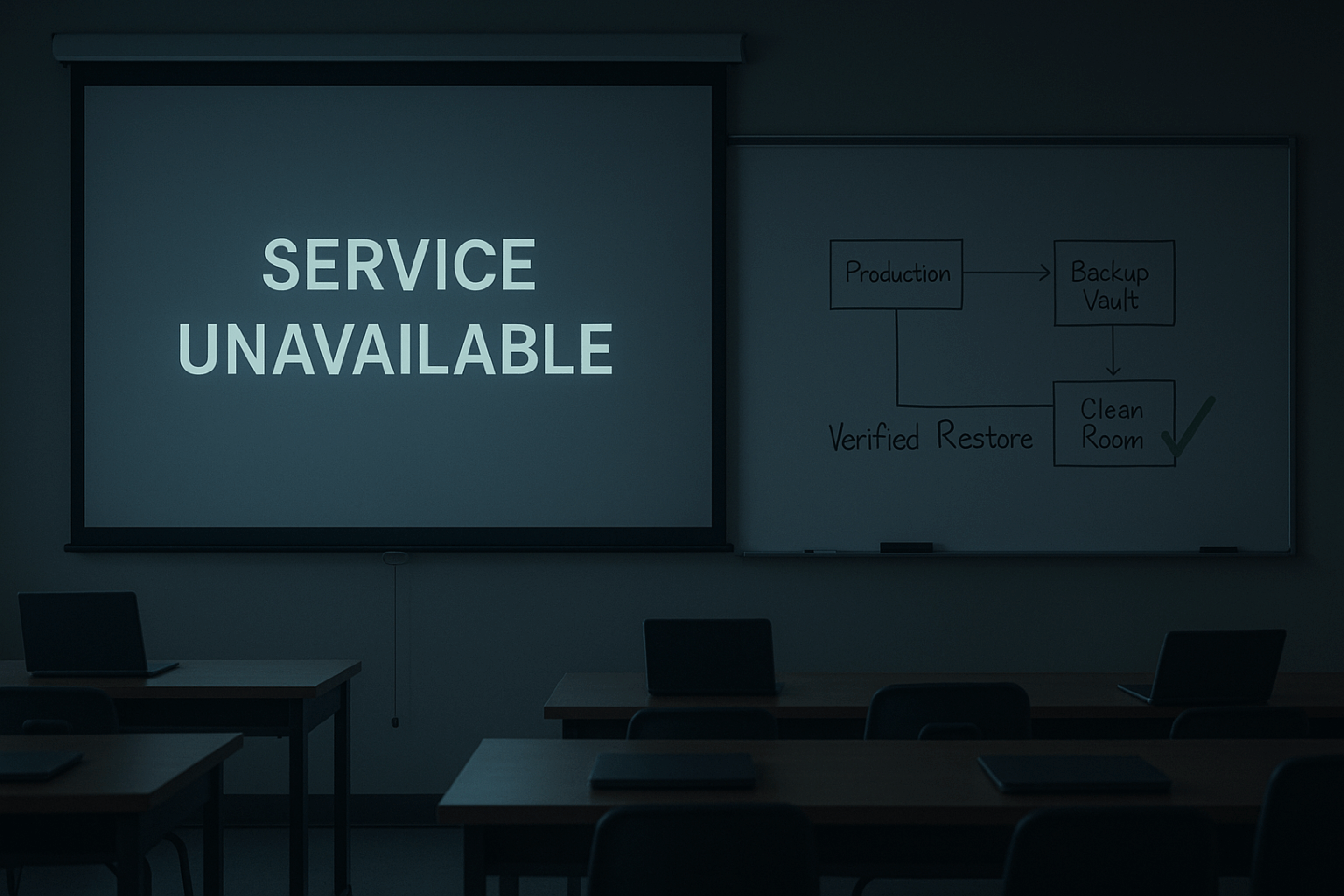DATA PROTECTION TRENDS, NEWS & BACKUP TIPS
Ransomware in Nevada: A Wake Up Call for Cyber Resilience
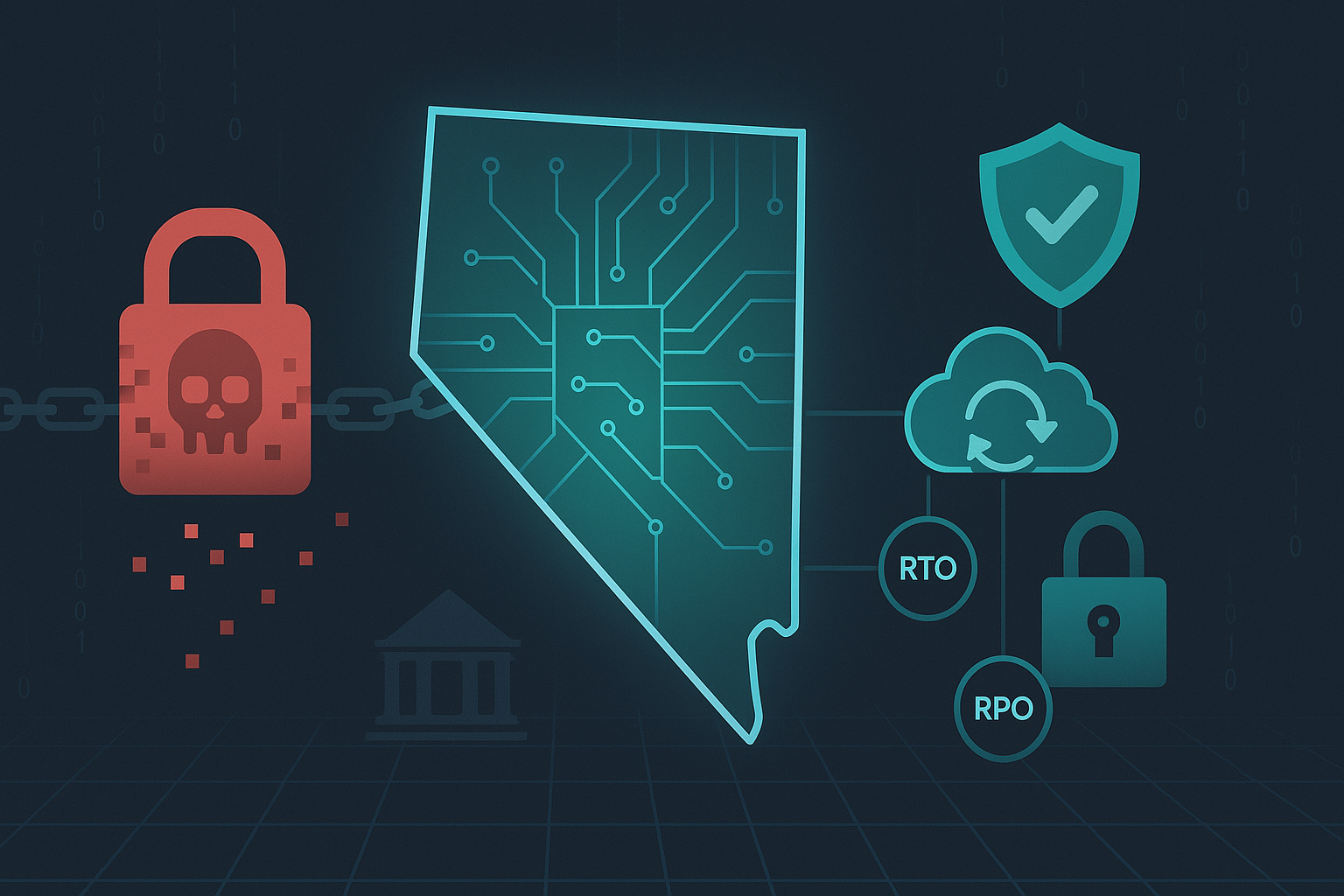
A recent ransomware attack on the state of Nevada disrupted government systems and public services statewide. Incidents like this remind every organization that resilience is not optional. In this advisory, we outline what happened in Nevada, the impact on critical services, and the broader implications for security leaders.
We then explain how Backup as a Service (BaaS) and Disaster Recovery as a Service (DRaaS) by CyberFortress powered by Veeam, help teams recover data and systems quickly, protect backups from tampering, and meet defined recovery time (RTO) and recovery point (RPO) objectives. We close with practical guidance you can act on today.
Nevada’s Ransomware Outage: Incident and Impact
In late August 2025, Nevada reported a sophisticated ransomware attack that infiltrated state networks and brought essential services to a halt. The incident was discovered on a Sunday morning, and state IT leaders isolated affected systems to contain the threat, which took down the main state website and many agency sites and online services. As a result, government websites and phone systems went dark across the state.
Several major agencies were offline, including the Department of Motor Vehicles, the Department of Human Services, and the Department of Business and Industry. Citizens arriving for DMV appointments found offices closed and all in-person and online transactions unavailable. Law enforcement experienced additional hurdles. For part of Sunday, state police dispatch lines were impacted and officers temporarily lost access to DMV records. Emergency services remained operational. The Nevada Supreme Court’s public case portal, email, and phone systems were also disrupted.
State leaders confirmed this was a ransomware attack for monetary gain. Investigators found evidence of data exfiltration, which means information was stolen from state systems, although the full scope was still being assessed. This dual tactic is common. Adversaries both encrypt systems to halt operations and steal sensitive data to increase pressure through potential leaks. With federal partners assisting, the state worked methodically to rebuild and verify systems before bringing services back online. Even with a careful response, the public experienced multi-day outages and limited services.
A Broader Wake Up Call for Cybersecurity Readiness
Public sector networks are frequent targets because disruption creates urgency and leverage. Well prepared agencies can still be knocked offline by a determined adversary. The question for every IT team is simple. How quickly can we recover if ransomware strikes today?
Cyber resilience is now a core operating capability. Prevention remains essential, yet it is not sufficient on its own. Resilience means you can withstand, respond to, and recover from attacks with speed and accuracy. That requires clear incident response playbooks and robust recovery options. Secure backups and tested disaster recovery can be the difference between a prolonged outage or ransom payment and a same day service restoration.
Build a Ransomware Recovery Plan with BaaS and DRaaS
Effective resilience rests on two pillars. Protect your data so attackers cannot destroy or encrypt it. Restore operations quickly so your organization can keep serving customers and constituents.
Backup as a Service (BaaS). BaaS continuously backs up data to an offsite, expert-managed repository. You gain a protected vault of clean restore points that are isolated from your primary environment.
Disaster Recovery as a Service (DRaaS). DRaaS maintains live, replicated systems on standby in the provider’s cloud. If the primary environment fails, you can transition production workloads to the recovery site in minutes.
Together, these services deliver three outcomes that matter most during ransomware response.
1) Speed of recovery to meet RTO
Time is the most precious resource in an outage. Every hour lost affects revenue, public trust, and safety. BaaS gives you reliable backups to restore from. For very large datasets, full rebuilds can still take time. DRaaS is designed for speed. It maintains up-to-date virtual copies of servers and applications that can be powered on quickly in the recovery site. Instead of waiting to rehydrate terabytes of data, you run on the replicas while you remediate and rebuild the primary environment.
In a statewide event like Nevada’s, a pre-staged DR environment could reduce disruption by moving citizen-facing applications to the recovery site the same business day. Agencies and enterprises that invest in this capability routinely achieve RTOs measured in minutes for critical systems.
2) Data integrity and RPO through secure, immutable backups
Backups are the last line of defense, which is why modern ransomware targets them. The answer is layered protection. Offsite backups increase isolation. Immutable storage prevents alteration or deletion for a defined retention period. With Veeam-powered immutability, once a backup is written to an object store with retention locks or to hardened on-premises storage, attackers cannot encrypt or erase it. You always retain a clean copy to restore.
Frequent backup schedules and continuous replication drive tight RPOs. Nightly backups may leave up to 24 hours of potential data loss. Near real-time replication shrinks that to minutes. When every record matters, this difference protects your operations and your customers.
3) Confidence through testing, runbooks, and service levels
Stress reveals preparation. The most common surprise in an incident is that restores take longer than expected. Managed BaaS and DRaaS reduce that risk by enforcing regular testing, documented runbooks, and service levels tied to RTO and RPO. Automated orchestration brings databases, applications, and network services online in the correct sequence. Routine restore tests validate that your data is recoverable and your procedures work. This rigor turns a chaotic day into an organized response.
Real-World Proof: Resilience in Action
Organizations that invest in modern backup and recovery are consistently able to refuse ransom, restore data, and move forward. County governments, logistics firms, healthcare providers, and financial services organizations have all demonstrated rapid recovery when a clean, immutable backup set and a ready DR site are in place. By contrast, teams without sufficient recovery capacity face painful choices. Some have paid significant ransoms and still endured weeks of manual decryption and rebuilds. Preparation determines which path you take.
Conclusion: From Response to Resilience
For executives and IT decision makers, Nevada’s experience is a clear signal to act. Ask the essential questions now.
- Are our most important systems and data backed up offsite and isolated from attack?
- Do we have immutable backups or offline copies that cannot be altered or deleted?
- Can we fail over critical applications to a recovery site within our RTO?
- Are we testing restores and disaster recovery procedures on a defined schedule?
- Do our RPOs reflect the true tolerance for data loss in each system?
If any answer is uncertain, close the gap. BaaS and DRaaS provide enterprise-grade protection and recovery without the overhead of building it all yourself. They help you restore services quickly, preserve data integrity, and demonstrate compliance.
Call to action: Bring your security, infrastructure, and application owners together this week. Review your RTO and RPO targets, verify immutability on your backup tiers, and confirm that your failover runbooks work as written. A few focused steps today can prevent days of disruption tomorrow. Cyber resilience protects people, preserves trust, and keeps your mission moving. That is the standard your stakeholders deserve. And if you need expert advice, be sure to contact us. We’ve helped thousands of customers across all industries with their cyber resilience.
Note on sources: This post draws on publicly reported details from outlets such as CBS News, StateScoop, Cybersecurity Dive, The Nevada Independent, and FOX5 Vegas.
